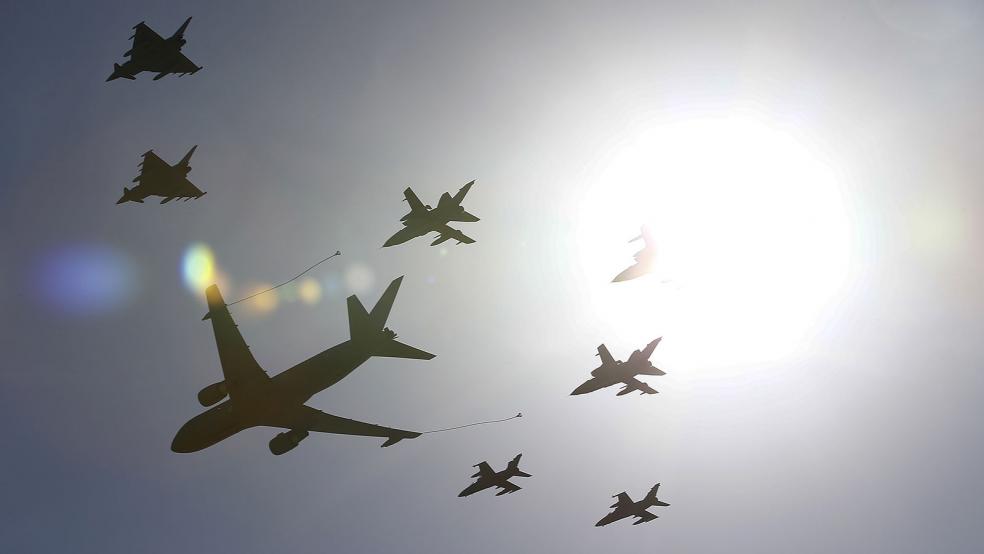The United States and Russia struck a deal on Tuesday to establish safety protocols aimed at reducing the risks to their aircraft as they carry out separate air campaigns in Syria.
The “memorandum of understanding” between Washington and Moscow defines safety protocols for all aircraft over Syria, including drones, and establishes a radio frequency both sides can use to communicate as well as a hotline for emergency calls, according to Pentagon press secretary Peter Cook.
Related: Putin Is Learning a Hard Lesson in Syria, but Pretends Easy Victory
He said agreement doesn’t include the sharing of target information, nor does it change the administration’s opposition to Russia’s military moves inside the country. Rather, the goal is that Moscow’s pilots "maintain safe distance.”
The agreement, the text of which will remain secret at Russia’ request, is the culmination of a series of “deconfliction” talks between the U.S. and Russia military officials after Moscow began a bombing campaign on Sept. 30. In recent days, Russian pilots have flown close to U.S. jets and drones over Syria.
Meanwhile, the U.S. is deploying the A-10 Thunderbolt II attack jet to neighboring Turkey.
A dozen planes arrived at Incirlik Air Base in the southern part of the country over the weekend. The installation has become major hub for the anti-ISIS coalition effort, with the U.S. flying F-16 fighter jets and other aircraft from the site against Islamic State targets inside Syria.
Related: Here's Why Obama Is Refusing to Meet with Russia to Discuss Syria
The A-10, known as the “Warthog,” adds a new element to the U.S. presence. The jet can loiter over the battlefield and provide support to ground forces. It’s especially known for its anti-tank capabilities.
Cook said the deployment was part of a regular planned rotation and that he didn’t know if the Warthog would fly sorties into Syria, a country that still has substantial anti-aircraft defenses.
However, there is the distinct possibility that the A-10 could fly missions against extremists on the ground Syria, especially after the Obama administration ended its effort to train moderate Syrian rebels to fight ISIS, switching to a program of support for indigenous groups already on the ground the region, backed by U.S. airpower.
Related: Eyeing Russia, the Air Force Sends More A-10 Warthogs to Europe
Last week Cook himself suggested the Pentagon was figuring how best to support rebel troops.
“This is an effort where we are providing support to rebels on the ground in Syria. We are providing air support … and we will continue to provide that support ongoing,” he said during a press briefing.
If the A-10 does venture into Syria, it likely would further cloud an already murky picture on the ground, regardless of the newly-minted compact between Washington and Moscow. The administration is already supplying anti-tank weapons to rebel forces to fight the regime’s forces; adding the A-10 to the mix would deepen U.S. involvement in the years-long conflict and boost critics who argue that Washington, despite President Obama’s protestations to the contrary, is getting sucked into a proxy war with Moscow.





